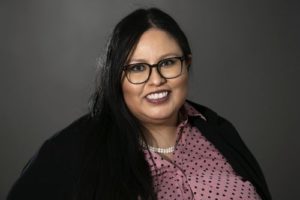SALISBURY, Md. – Members of the Maryland Lynching Truth and Reconciliation Commission met today in Salisbury, discussing the lynching and murder of 3 men in Salisbury between 1890 and 1930, one of whom was killed in front of the Salisbury courthouse steps.
While 3 men were the focus of the hearing, only two’s names were known to the commission, 18-year-old James Garfield king and 23-year-old Mathew Williams. In the days that followed William’s Lynching on December 4, 1931, a third man was found badly beaten and disfigured and was unable to be identified.
The commission heard from family members of Garfield, who say he was in a jail cell awaiting trial for shooting a man in self-defense when a mob descended on the jail and broke him out to lynch him.
“The savages that lynched my uncle did not wear a mask, they called each other by name, however, no one was identified,” said relative La Tanya Christopher.
Members of the committee spoke about the impact racial violence had on the community, with many in the black community living in fear.
“My family was terrorized and the fear lasted for generations,” Christopher said.
The hearing in Salisbury University Wicomico room focused heavily on the pain that the incidents had, but also those that were behind them, and helped to cover them up.
Committee Member and History and Conflict PhD at George Mason University Charles Chavis present a report on the lead-up, events of, and aftermath of the Lynching of Williams, showing evidence gathered at the time that indicated the involvement of local law enforcement, judges, states attorney and other members of state government in the lynching and cover-up.
“I wanted to dispel the myth that these were unknown mobs, these mobs were known to the people in the community, this man was lynched by his neighbors,” Chavis said.
Chavis detailed accounts of the lynching, including a release being sent to the Baltimore Sun two days prior to the lynching to have a reporter cover the event, indicating it was not a spontaneous mob but rather “an act of organized racial terror,” according to Chavis.
“What we discovered was not only that justice was not done, those who were tasked to protect and serve were directly involved behind his lynching and subsequent cover-up,” he said.
Chavis and his colleagues even found records of Maryland’s governor ordering a secret investigation of officials at the time sending undercover Pinkerton agents to the town to find the truth, in parallel to a public investigation being conducted by the officials Chavis believes were involved in the crime.
“The Governor, as well as the Attorney General, recognized that the lynchingswere state-sanctioned,” he said adding “The states’ attorney at the time Claude Bailey was coaching witnesses going in and out of the grand jury and working directly with the former mayor to manipulate testimony.”
Writings from the various Pinkerton agents were shown, as well as journalists’ accounts at the time, and witness interviews were conducted with black and white citizens, who pointed to the involvement of the Salisbury Police Department, Fire Department, City Government, State’s attorney and business leaders.
Chavis says the lynching was also used to further another white supremacist outcome; the destruction of a wealthy black businesses district in Salisbury known as Georgetown. But he says the destruction of the town was not the result of a violent mob such as the destruction seen in Tulsa Oklahoma, but rather an undertaking that had years of planning behind it from local developers.
“We obtained evidence that substantiated with historical documents and maps of commissions of the properties, and their values and their intent to dispossess them by local developers, intent on carving up this community,” Chavis said adding “In this case of Georgetown the lynching had nothing to do with this crime but was used to justify the destruction of this community.”
Chavis tells 47ABC, the information presented at the hearing is painful, but that the city of Salisbury has a unique opportunity to address the past and move forward, as many places in the US do not have this level of records and documentation around lynchings, their victims and those that were implicated but never charged in their roles.
“I think the city with this information can lead the way and reframe this history that we don’t have the luxury of always understanding,” Chavis said.
The committee hearing was one of several commissioned by the HB307 that created the commission in 2020 with a sunset date of 2022.
However, that date has been extended to 2024, which commission members say gives them more time to hear stories such as those in Salisbury, before making their recommendations to the state for policy changes.
“The fact that we have this acknowledgment goes a long way but by making it clear that the issues of racial oppression are everyone’s issues, people of color may be the victims of it but others suffer as well including white people, we can frame this as a collective problem and have a collective solution,” said committee member Dr. David Fakunle.
The commission is set to meet in two weeks in Somerset County.




